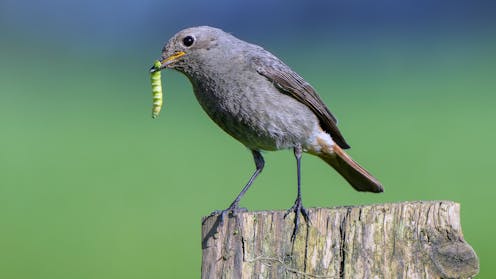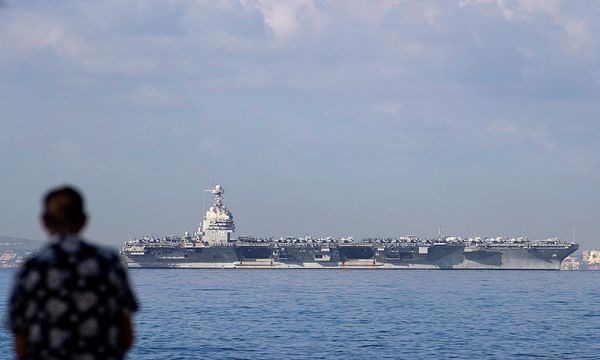
For many people, “plastic pollution” calls to mind pictures of turtles and other marine life drowning in single-use plastic bottles and discarded fishing nets. My own research looks at how the same story is playing out on land.
Plastics are increasingly found in small mammals, insects and the soil. But how it moves through these ecosystems – and the damage it might be doing – is still poorly understood.
My own research into this started during my masters degree. I wanted to find out if plastic pollution was affecting UK mammals – and the results were startling.
Colleagues and I first looked at the faeces of a range of small UK mammals. We then used a special machine that detects infrared light to identify different types of plastic.
We found plastics in the faeces of European hedgehogs, wood mice, field vole, and brown rats. Of the 189 hedgehog samples, 19% contained plastics. In one sample alone I was shocked to find a total of 12 pink and clear fibres of polyester. This is the UK’s most popular wild mammal, and no one knew they were ingesting plastic.
Where the microplastics came from
As part of my ongoing PhD, the next step was figuring out how this plastic was getting into the hedgehogs in the first place. Hedgehogs feed on invertebrates like beetles, snails, slugs, earthworms, caterpillars and woodlice. We wanted to see if those creatures could themselves be contaminated by plastic.
We collected over 2,000 invertebrates and soil samples from 51 sites in Sussex, England. The sites covered farmland, grassland and suburban areas.
To trace how plastic might move through the food web, we sampled creatures at various different points in the food web (known as “trophic levels”). This meant plant-eaters, like peacock butterfly caterpillars, and earthworms and other animals that feed on dead plants. We sampled omnivores who will eat all sorts, like the red-footed soldier beetle, and carnivores like ladybirds and ground beetles, who eat other animals and are found higher up the food web.
After we had grouped the invertebrates by both species and location, we had 530 samples to analyse. We recently published our results in the journal Environmental Toxicology and Chemistry.
Overall, plastic showed up in 12% of the invertebrate samples. Earthworms had the highest rate at 29%, followed by snails & slugs at 24%. Interestingly, the types of plastic found in carnivores didn’t match those in herbivores and dead plant-eaters. That suggests the carnivores are not just getting it from eating contaminated prey – they might also be picking up plastic as they move through the soil or even from airborne particles that land on their next meal.

We also found the first evidence of plastic in species of caterpillar like the peacock, powder blue and red admiral butterflies, and in beetles such as ladybirds.
The most common plastic we found was polyester, probably from clothing and furniture. Other common plastics were those used in single-use packaging, agricultural materials (such as fleece, mulch film, greenhouse films and silage wrap), and even paint.
So, does it matter if a few slugs or worms are ingesting plastic? Absolutely.
Invertebrates play important roles within their ecosystems. Earthworms, for example, add air to the soil and help cycle nutrients. Therefore, when they consume plastic, it affects the animals that prey on them, the soil they live in, and even the food we grow.
In fact, plants grown in plastic-contaminated soil have been shown to take microplastics into their cells. This can stunt their growth and limit the water they can retain, and ultimately reduce our ability to grow the food we need.
Insect-eating birds like swifts,thrushes and blackbirds are also ingesting similar plastic, likely from their prey. This can stunt their growth, damage organs, and make them less fertile.
It is too easy to place the responsibility solely on individuals to avoid single-use packaging, recycle more, and avoid synthetic materials. These things make a difference, of course, but big polluters must be held accountable. That means fast fashion companies, drinks giants, supermarket chains and the agriculture sector, which all produce a huge amount of plastic waste and have failed to take responsibility for the damage this causes.
If we want to protect ecosystems from plastic – on land as well as at sea – we need more than personal action. We need serious accountability, better waste management, and real investment in truly sustainable alternatives.
Don’t have time to read about climate change as much as you’d like?
Get a weekly roundup in your inbox instead. Every Wednesday, The Conversation’s environment editor writes Imagine, a short email that goes a little deeper into just one climate issue. Join the 45,000+ readers who’ve subscribed so far.
Emily Thrift does not work for, consult, own shares in or receive funding from any company or organisation that would benefit from this article, and has disclosed no relevant affiliations beyond their academic appointment.
This article was originally published on The Conversation. Read the original article.







